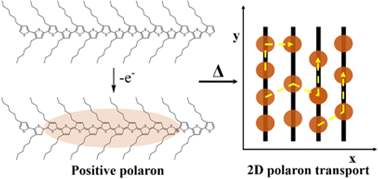Probing the nature of charge carriers in one-dimensional conjugated polymers: a review of the theoretical models, experimental trends, and thermoelectric applications
Abstract
Since the first discovery of polyacetylene in the late 1970s, one-dimensional (1D) conjugated polymers have attracted immense research interest as a result of their high conductivity, wide and tunable band gap, and solution processability, making them extraordinary materials for the next-generation organic electronics, photovoltaics, and thermoelectrics. Recently, more research interest has been devoted to integrating the 1D conjugated polymers with organic tissues, e.g., implantable electrodes and electronic plants, as their excellent biofunctions and biocompatibilities are demonstrated. However, to achieve optimal material designs for the 1D conjugated polymers in practical applications, it is essential to understand their fundamental charge transport mechanisms. The current reviews are mainly focused on the functional properties and applications of the conjugated polymers while the theoretical models for charge transport and their correlations with the experimental observations are barely discussed systematically. In this review article, we try to elucidate the nature of charge carriers by taking the total footprints of the research and development in conjugated polymers for consideration, from molecular orbitals to thermally activated conductivity. The electronic structures and mathematical description of the charge carriers, i.e., solitons, polarons, and bipolarons, are discussed and analyzed based on the frontier molecular orbital theory, non-interacting model, Su–Schrieffer–Heeger model, density functional theory, and Holstein-based models. The predicted electronic structures for the charge carriers are model-dependent which can be either weakly or strongly correlated with the Coulomb interactions in the valence and conduction bands. Origins of the optical signatures of the charge carriers, e.g., polarons and bipolarons, in the visible, near infrared, and mid infrared ranges are described and discussed, which may provide semi-quantitative information on the conjugation length and delocalization of the charge carriers. Experimental observations of the spectroscopic characteristics of the charge carriers and their correlations with the molecular configuration, conductivity, crystallinity, and composition of the conjugated polymers are carefully reviewed and compared based on doping induced dopant–host interactions. The transport mechanism of the charge carriers can be described two-dimensionally in the microscale and probed by analyzing the thermoelectric properties of the conjugated polymers and modelling the thermally activated conductivity as a function of the thermopower at the device scale.

- This article is part of the themed collection: Journal of Materials Chemistry C Recent Review Articles


 Please wait while we load your content...
Please wait while we load your content...